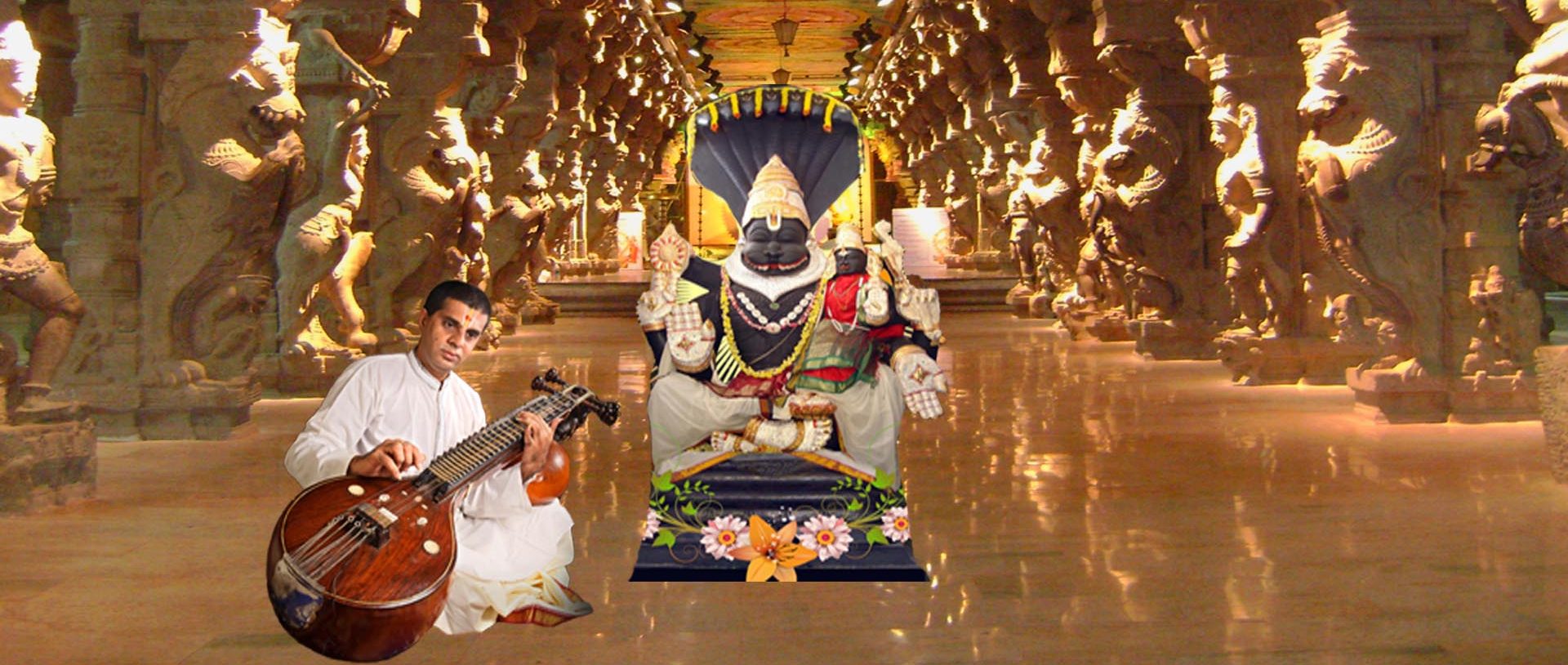Construction of Veena

To make a Veena, various tools and raw materials are used including:
- Jackfruit Wood: The main raw material used for making the Veena.
- Chisels and Hammers: These tools are used to carve different designs into the wood.
- L-shaped Scale: This tool helps with measuring and marking motifs.
- Wood Husk, Fevicol, and Yellow Colour Powder: These are mixed together to make a paste which is applied to cover gaps in the Veena.
- Lac Colors: These are used for inlay work on the Veena.
- Bee Wax and Coal Powder: These materials are used to create a base for the brass metal frets.
- Gum Benzoin: This is melted and mixed with color powder to create lac color for inlay work on plastic sheets.
- Buffing Machine: A machine used to smooth out the surface of the wood.
- Drilling Tool: A manually operated tool used for drilling holes.
- Pegs and Knobs: These are attached to the Veena and used for tuning the strings.
- Brass and Steel Strings: The strings that produce music when played on the Veena.
- Sandpaper and Files: Used to smooth out the surface of the wood.
Different types of Chisels used

Different types of Wood Scrapers Used

Different types of saw tools Used

- Selection of wood: The wood used to make the instrument is typically jackfruit or teak wood, as they are strong and durable. Jackfruit wood is considered to be the best for making veena because of its natural resonance, density, and ability to withstand the tension of the strings. Teak is also a good option, but it is more expensive.
- Carving the body: The wood is first rough-cut and then shaped into the body of the veena. The shape of the body is typically hourglass-shaped, with a large resonator at the bottom and a smaller resonator at the top. The body of the veena is carved to create a hollow chamber that amplifies the sound of the strings. The carver has to be skilled in creating the shape and size of the chamber that will produce the best sound.
- Making the frets: Frets are made out of metal and are fixed with wax on the dandi of the veena. The number of frets can vary, but a typical veena has around 24 frets. The frets are positioned in such a way that they divide the neck into equal parts, making it easy to play the notes. The metal wire used for making frets is usually a combination of brass and nickel, which provides the right balance of strength and flexibility.
- Installing the strings: The veena has two sets of strings, one for playing melody and one for playing drones. The melody strings are made of steel, while the drone strings are made brass. The strings are stretched across the frets and the body of the instrument, and are secured to the tuning pegs. The tension of the strings is adjusted to produce the desired pitch.
- Making the tuning pegs: The tuning pegs are used to adjust the tension of the strings and are typically made of wood or metal. They are inserted into the head of the veena and are used to adjust the pitch of the strings.
- Adding the Resonating Plate: The gourd resonators are typically made of a dried gourd and are attached to the top of the instrument. They are used to amplify the sound of the instrument. The gourd resonators are carefully selected for their size, shape, and thickness to ensure that they produce the best sound.
- Finishing: The instrument is then polished and decorated with intricate carvings, inlay work, or paint. The finishing process is done by a skilled artisan, who uses various tools and techniques to create intricate designs and patterns on the instrument. The finished veena is not only beautiful but also has great acoustics.
- Adjusting and tuning: Once the instrument is completed, it is adjusted and tuned to ensure proper sound and playability. The strings are stretched and tuned to the right pitch, and any final adjustments are made to ensure that the instrument is in perfect working condition.

